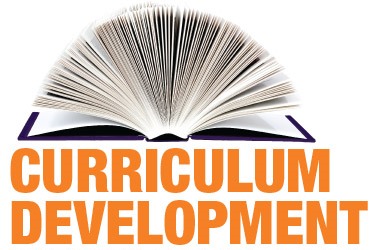
What you need to know about the Curriculum Development

As an educator I have always been involved in the development of curriculum. I was amazed how much I knew or should I say little about curriculum and its construction. My first year as a teacher I realized I knew little about what the students were to supposed to learn and how they were going to demonstrate that learning. Every night I stayed up late researching what the students were required to learn and then try to design activities that were fun and meaningful. This process took me numerous hours and lots of paper.
Once I determine what students needed to learn, then I begin lesson planning process.
It was not until this summer that I understood the importance of curriculum development. I was asked to serve on a curriculum writing team for the gifted and talented program. As a team we laid out all the standards and created a template that would help us organize the knowledge and skills into simple units of instruction by theme. This experience allowed me to visualize the learning continuum of the standards.
Today, teaching the curriculum is so much easier because schools already have curriculum developed. What I learned from this experience was the importance of curriculum development and its impact on teaching. The curriculum we developed made teaching so much easier because we had a system in place that addressed all the learning standards in an organized way. In addition, since the units were also vertical aligned from grade level to grade level, I knew exactly how deep the students needed to learn the content and when I needed to move on.
As a educator, the first step to effective teaching is to know the curriculum and how its development. Every system has a curriculum management plan which includes a curriculum development process.

A Basic Process Curriculum Development includes
3 Essential Steps:
- The development of the vertical alignment document includes all the student expectations of learning for the course or grade level. Its purpose is to assure equity, provide a rational system, reduce gaps and unproductive redundancies, and reduce/refocus teacher planning time.
The Vertical Alignment Document (VAD) is the scope of the curriculum. It shows how standards, student expectations and content clarifications line up from one grade level to another. The VAD is the depth of understanding for students at specific grade levels or courses.
As a teacher, you can use this document how deep to teach the standard. This document is the BIG picture of the depth of learning. When a student says, “I have never seen this before,” use this document to show the student what they have already mastered in previous years and how the lesson supports his/her future learning. The VERBS are important to understand and see the progression of learning. - The organization of aligned student expectations into “bundles”: rational, coherent “units” of instruction. These units will span a time line with a specified time span (required pacing).
The unit of instruction is the sequence of the curriculum. As a teacher, you could use document to help your students understand the chunks the learning into manageable pieces of information. The standards are spiraled throughout the curriculum which help students retain the new learning. - The creation of a map of the year, Year at a Glance, includes the standards for each unit.
The Year-at-a-Glance (YAG) document outlines the curriculum standards, usually by a specific number of weeks for the whole school year. This is a brief overview of stnads listed by general content descriptors and how they are organized for the year.
As a teacher you could use this document to help give your students and parents a map of the year and what to expect in each unit. For secondary teachers, this is your timeline for your course syllabus. In addition, this document helps you as a teacher with pacing so that you don’t skip any standards and their specificity.
Once a teacher understands the purpose the curriculum development process, then planning becomes easier and focus of energy can be placed on student learning of the curriculum rather than determining what standard to teach and how often to teach the standard.
